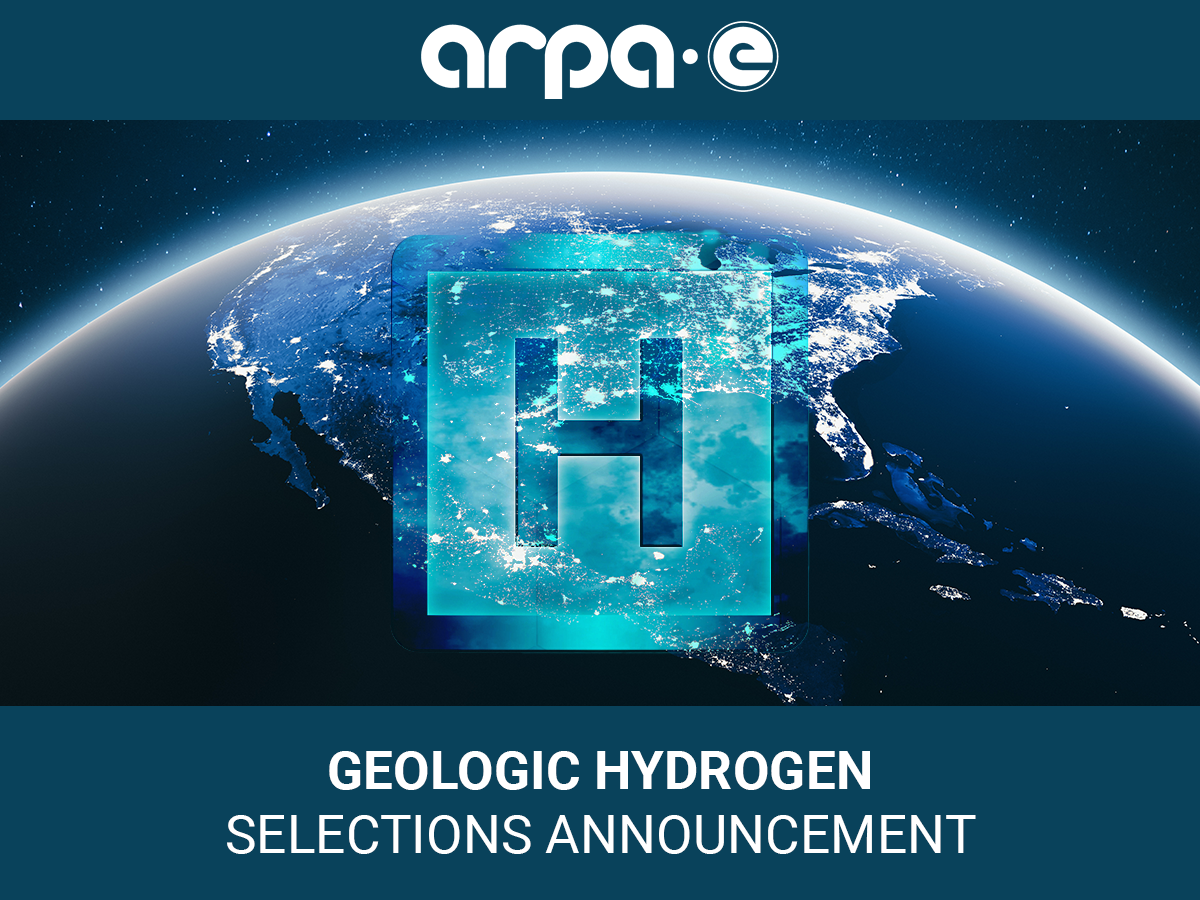Earlier this month, a team of French and Albanian geologists published a short report documenting some unusually strong emanations of gas from a chromium ore mine in Albania. The paper, which appeared in the prestigious journal Science, describes a focused source of hydrogen that had apparently been tapped into by accident, some years ago, as a consequence of the mining operations. For a long time, it has been conventional wisdom that, because it is so light and reactive, hydrogen in the form of the energy-rich H2 molecule would never be found in appreciable quantities on Earth. Indeed, President George W. Bush was ridiculed in 2003 for his statement that hydrogen is the solution to the energy crisis, because it is available “right in our backyard.” But it now seems plausible that the former President was (unknowingly) on to something. The prospect of naturally abundant, carbon-free hydrogen is suddenly a very hot topic in the renewable energy field, and the latest holy grail solution to climate change.
Naturally occurring geologic deposits of hydrogen (now dubbed “gold” or “white” hydrogen) are of intense commercial interest because they offer a way to bypass the energy-intensive, highly polluting processes that we currently use to produce the fuel. Today almost all industrial hydrogen is made from natural gas or coal (“gray” and “brown” hydrogen, respectively), but these methods release large amounts of carbon dioxide and methane into the atmosphere. Other approaches are slowly becoming available, especially “blue” hydrogen (which incorporates carbon capture into the “gray” process), “green” hydrogen (made by electrolysis of water using renewable power), “turquoise” hydrogen (made by thermal splitting of methane to generate a solid carbon byproduct instead of CO2) and “pink” hydrogen (made by electrolysis from dedicated nuclear fission). But these alternatives are either still too expensive (green), bring up old conflicts that never die (pink), release at least some CO2 and methane (blue) or remain stuck at the pilot scale (turquoise).
A future energy economy built on natural hydrogen would, of course, substitute that fuel for natural gas in manufacturing processes that are difficult to electrify – as we envision for hydrogen synthesized by any of the above processes. But more importantly, electric power could itself be generated in hydrogen-fueled turbines operating almost identically to natural gas power plants. Instead of using solar and wind farms to generate electricity for green hydrogen synthesis, we would do the reverse – mine the hydrogen and use that to generate electricity for the grid. The big disadvantages of solar and wind power, their intermittency and huge land footprints, would disappear. And the cost of providing electricity from natural hydrogen is expected to be low, since no fundamentally new technology is needed. Little wonder that this so-called “gold” hydrogen is attracting so much attention.
One might have thought that if natural hydrogen were really abundant enough to drive the global energy economy, then we would surely have found more of it by now. Part of the explanation is that the types of rock formations that sequester hydrogen are different from the sedimentary rocks that are the source of oil and gas. Moreover, any hydrogen that might be produced deep underground along with the oil and gas either reacts with those molecules, generating hydrocarbons with higher ratios of hydrogen to carbon atoms, or combines with carbon dioxide to form methane – food for some of the abundant microorganisms in the subsurface.
Seepage of hydrogen from underground has actually been documented for more than a century, but the quantities have usually been very small and the geologic origins of the gas unclear. This reinforced the scientific paradigm that natural hydrogen could not be abundant, putting a damper on commercial exploration. A breakthrough finally occurred with the publication of a 2018 paper in the International Journal of Hydrogen Energy, documenting the presence of an extensive natural hydrogen field in the village of Bourakebougou, Mali. The field was found by accident when a water well drilled in 1987 discharged an explosive gas identified as hydrogen. In 2012, the capped well was reinvestigated by an oil and gas prospecting company, which explored the area more thoroughly and, in the 2018 paper, offered some ideas on the geologic origins of the gas. The hydrogen well has been continuously powering a small electricity grid in the village for the past decade, showing that the source of the gas is stable over at least this length of time. This paper, unsurprisingly, has stimulated a great deal of interest in exploring the global extent of the resource.
The scientific literature on natural hydrogen describes at least four different ways for how it may be generated. Some H2 likely arises from an underground chemical reaction that converts water into hydrogen and oxygen, similar to the way we split water by electrolysis to make green hydrogen, except that the energy comes from the decay of radioactive isotopes in the Earth’s crust. A second notion is that hydrogen is continuously generated deep in the Earth’s core or mantle, and makes its way to the surface by following faults or tectonic plate boundaries. Some hydrogen is probably also produced biotically by microorganisms as a byproduct of their metabolisms or during their decomposition after death. However, perhaps the most generally accepted mechanism for generating large amounts of natural hydrogen is serpentinization, a chemical reaction between water and iron-rich rocks that occurs underground under conditions of high temperature and pressure. Too little is known to exclude either biotic or radioactivity-based mechanisms as significant sources of natural hydrogen, though seepage from the deep mantle or core is presently a controversial idea with few adherents.
The serpentinization reaction occurs in rocks that are high in iron and magnesium content, such as peridotite, and are generally described as “ultramafic.” They are abundant in the Earth’s upper mantle. The upper mantle and overlying crust of the Earth (together called the lithosphere) form the set of interlocking plates that gives rise to the movement of the continents over time. This tectonic activity also brings about the transport of chemical substances, including hydrogen gas, from the subsurface into the atmosphere. Oil and gas, in contrast, are mainly found in the overlying sedimentary rocks, such as shale. The iron reaction with water in ultramafic rocks occurs preferentially in areas where the crust is fractured, such as at plate boundaries, because the fractures allow water to penetrate more deeply. This has given rise to the notion that we may be able to deliberately fracture iron-rich rocks to artificially stimulate hydrogen production. Hydrogen that might be generated in this way has been dubbed “orange” (because every new way to make hydrogen, for some reason, has to be labeled with a color).
Geoscientists are able to estimate the mass of hydrogen that can be produced by serpentinization of a given volume of ultramafic rock. Given the huge abundance of these formations underlying Earth’s crust, the potential for hydrogen production is vast, probably enough to supply humanity’s needs for the indefinite future. The big question, though, is whether large recoverable quantities of this hydrogen has accumulated in formations that are technically accessible to drilling in a cost-effective way. Does a hydrogen geologic system comprising a resource comparable to oil and gas actually exist? Is an abundant clean fuel really there for the taking, and we have just missed it so far?
The Science paper from the French and Albanian teams is exciting because it suggests positive answers to these questions. In the authors’ words: “Our study unveils a high emission rate of almost pure geologic H2, suggesting the potential for a new extractable primary energy source.”
The Albanian chromite mine is located on an ultramafic massif that is part of what the authors describe as “the giant Eastern Mediterranean supra-subduction-zone ophiolite belt.” This is a huge, 3000 kilometer long section of rock that was formerly part of the lithosphere under the ocean, and that contains bodies of ore (hence the mining). Tectonic forces moved the massif to its present location, where it extends to a depth of just 6 kilometers – shallower than most of the upper mantle, and hence easier to mine. Peridotite rock containing the iron-rich mineral olivine is present in the deepest part of the massif. Ophiolites of this kind are found on all continents, and have often been observed to contain seeps of hydrogen gas. In the US, mountain ranges from Southern California to the Washington Cascades are abundant in these formations. The midcontinental rift region of the US, which extends from Michigan to Kansas, is another area where mineral-rich rocks are abundant at shallower depths.
In their paper, the researchers describe how they explored the mine, and document outgassing of hydrogen up to 84% pure from various specific locations. This was made possible by installation of a network of hydrogen sensors and flowmeters positioned over dozens of boreholes drilled into the rock. The hydrogen emanates most abundantly in what the authors describe as a “tectonic zone,” an area rich in underground faults that presumably offers entry points for water to promote the serpentinization reaction. The flow of hydrogen has remained consistent through six years of study, again showing (as in Mali) that the underground reactions are not yet diminishing.
Perhaps the most significant finding from the paper comes from some careful measurements and calculations that distinguish whether the hydrogen arises from continuous present-day serpentinization or, in the alternative, from a fossil reservoir of H2 that was opened accidentally during the chromium ore mining. By carefully estimating the volume of rock present in the massif, and comparing the measured hydrogen flows to global estimates of natural hydrogen production, the authors were able to deduce that the H2 coming from the mine today must arise from an accumulation that built up over geologic time. The work thus reveals the existence of a fossil hydrogen deposit that is capped with an impervious rock to prevent escape of the gas, analogous to natural gas deposits in shale and other sedimentary rocks. The authors are clear about the implications: ophiolite formations, known to be abundant on all continents, contain H2 that “exhibit[s] potential for commercial extraction as it can be focused into fracture zones and trapped.”
So, is natural hydrogen an actually realizable holy grail? There is, of course, a big gap between the still-exploratory field research going on now, and a full-fledged commercial industry. Yet it does appear that the genie is out of the bottle. Numerous startup companies, in the US and abroad, are working to raise capital for drilling, especially in the US midcontinental rift region. And the US Department of Energy just announced $20 million apportioned into sixteen awards for gold and orange hydrogen research, which is going to a number of universities, private companies, and national labs. Some of the projects will focus on technologies to stimulate hydrogen production from minerals, including basic research to better understand how the serpentinization reactions work. Others are dedicated to looking at how the hydrogen moves around in the subsurface, including engineering contained reservoirs and attendant safety issues. Waiting in the wings are the large oil and gas companies, who will surely swoop in to buy out the most promising startups when they think the moment is right. Developments in this field are well worth following, as successful commercial production of natural hydrogen could be an important driver to reduce and perhaps eventually eliminate the need for natural gas in our energy economy.
_____________
Science paper on Albanian hydrogen reservoir: https://www.science.org/doi/10.1126/science.adk9099
Comment on Albanian hydrogen reservoir: https://www.science.org/content/article/gusher-gas-deep-mine-stokes-interest-natural-hydrogen
Global hydrogen review: https://www.iea.org/reports/global-hydrogen-review-2023
Natural hydrogen review: https://www.science.org/content/article/hidden-hydrogen-earth-may-hold-vast-stores-renewable-carbon-free-fuel
Mali hydrogen field: https://www.sciencedirect.com/science/article/abs/pii/S0360319918327861
Chemistry World article on natural H2 reserves: https://www.chemistryworld.com/features/the-hunt-for-natural-hydrogen-reserves/4017747.article
Sources of geologic hydrogen: https://www.spglobal.com/commodityinsights/en/market-insights/latest-news/energy-transition/101723-geologic-hydrogen-attracts-interest-as-a-clean-energy-source
Thorough, readable technical overview of natural hydrogen: https://www.sciencedirect.com/science/article/pii/S1364032123007463
DOE funding announcement: https://arpa-e.energy.gov/news-and-media/press-releases/us-department-energy-announces-20-million-16-projects-spearheading
Natural hydrogen startup companies: https://www.eenews.net/articles/gold-hydrogen-the-next-clean-fuel/
US natural hydrogen exploration: https://eepower.com/market-insights/the-future-of-hydrogen-could-be-found-underground/#

